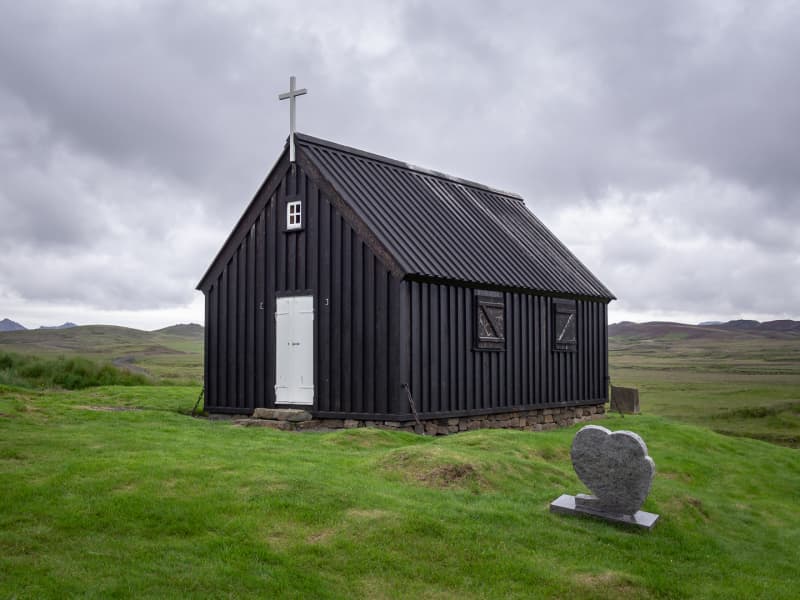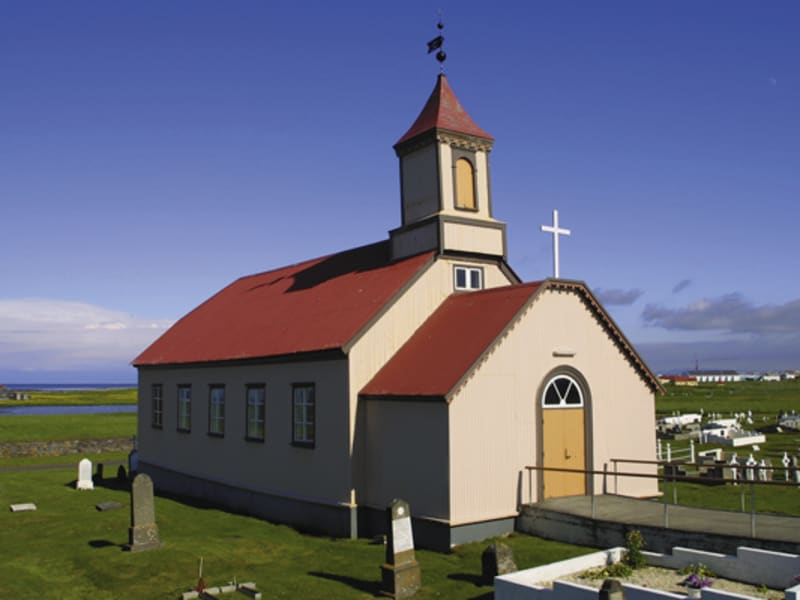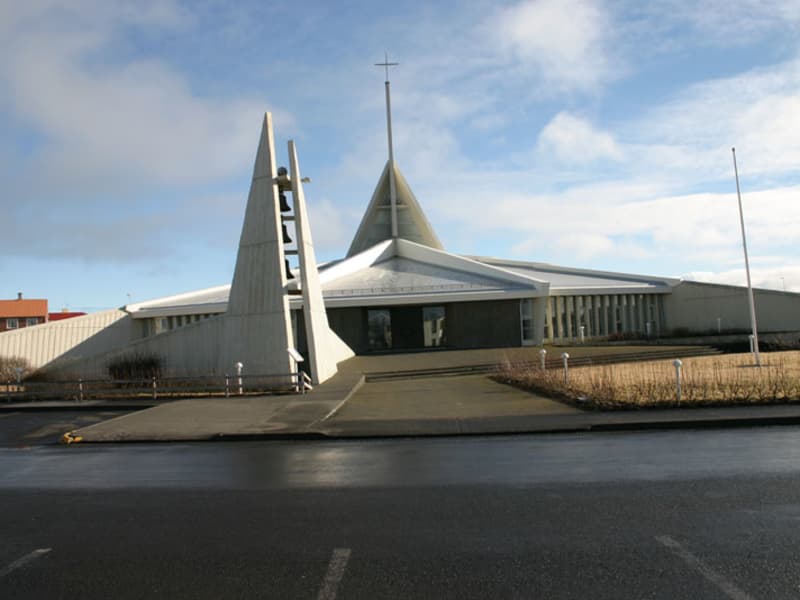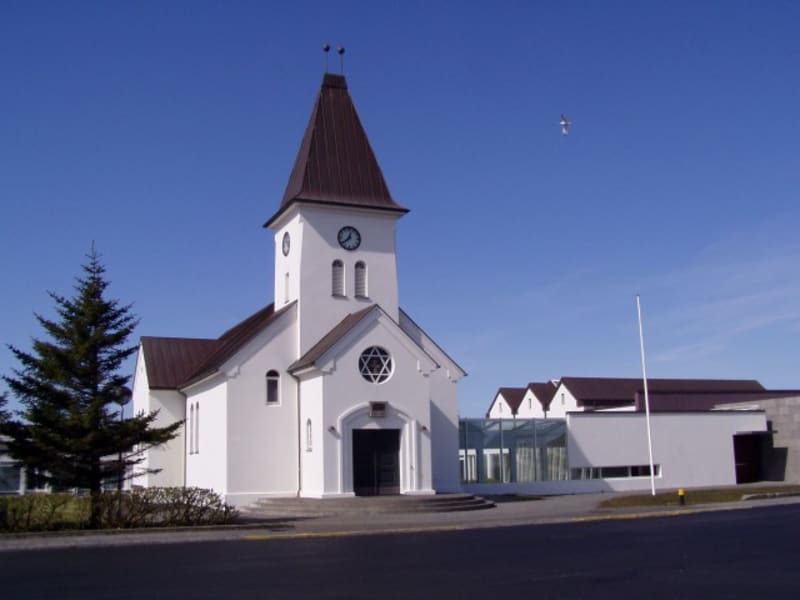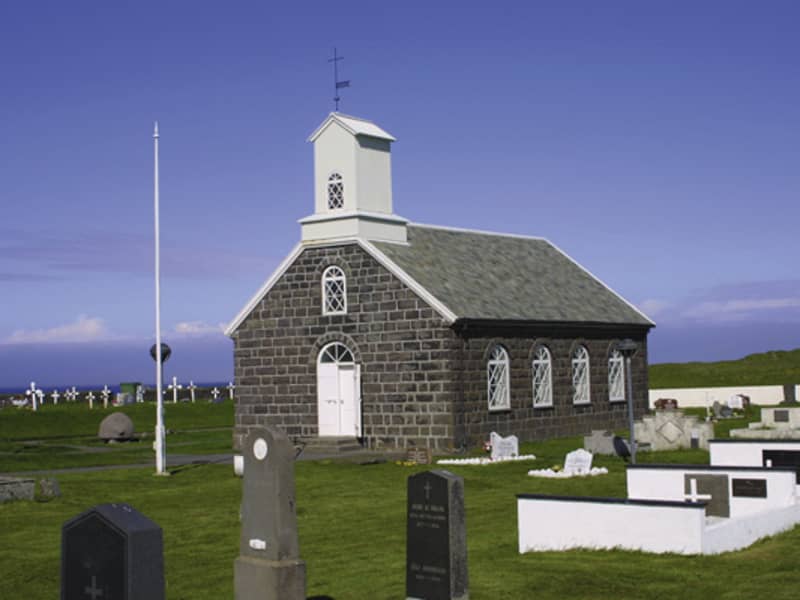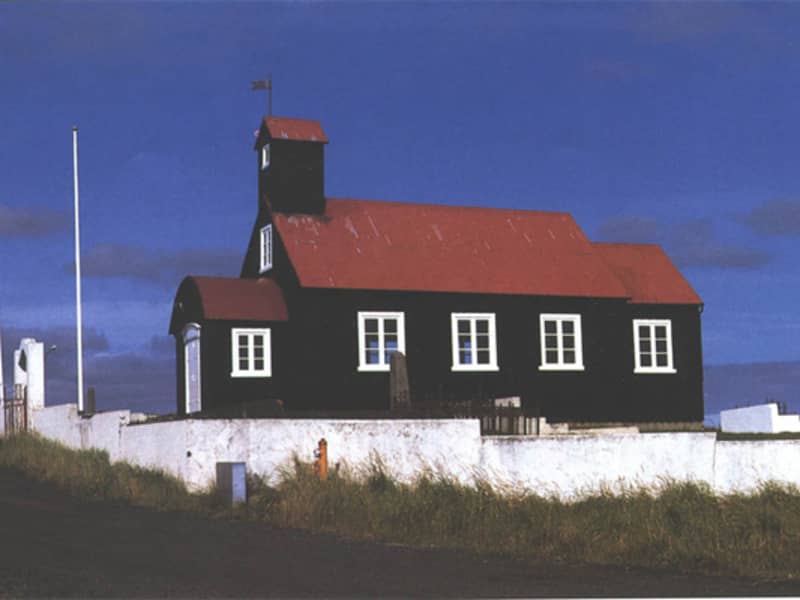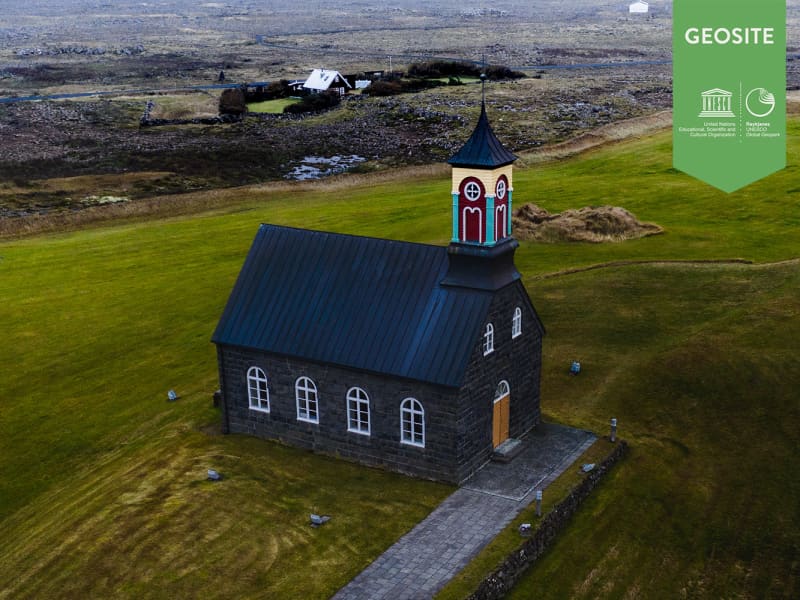The Church in Innri-Njarðvík
By the initiative of Ásbjörn Ólafsson, a farmer in Innri-Njarðvík, a church was built on the location. The church was consegrated in 1886 and is made from carved rock which was brought from the shore nearby and the heath above the inhabitated area. Magnús Magnússon (1842-1887) organized the carving of the rocks. One of the three clocks in the churchtower is an ancient clock made in 1725. The Church in Innri-Njarðvík is preserved.

